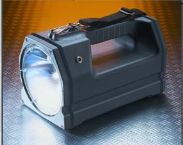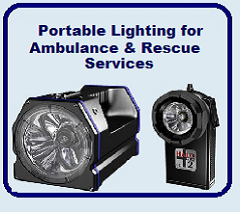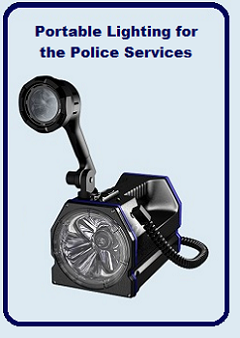Rail Industry
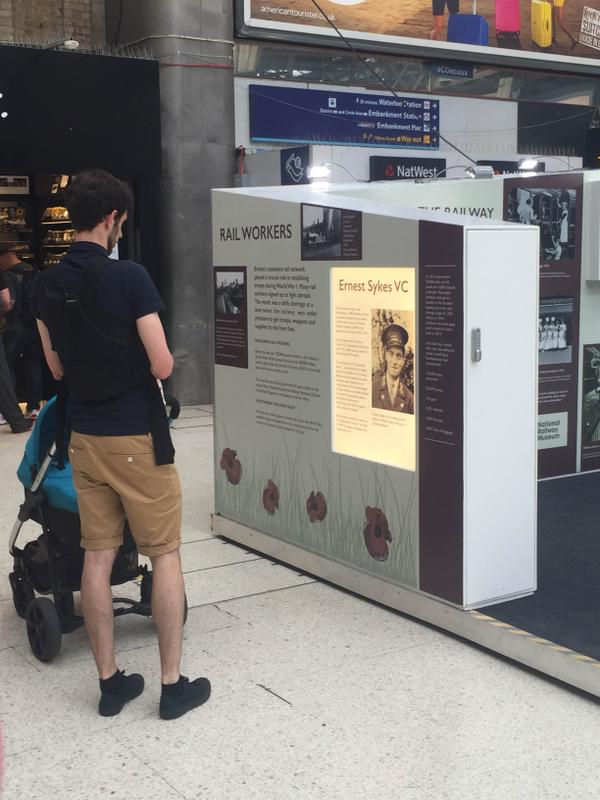
Image from Network Rail
An exhibition by the Rail Delivery Group highlighting the important role of women in the railways during WW1 has just opened in London.
This free exhibition will be at London Charing Cross station until 10 August when it will move to King’s Cross station until August 31. After this it will be touring around the country – details of future locations will be announced here.
The railway played an important part in WW1, transporting troops, horses, military equipment and medical supplies around the country. Almost 100,000 men left the railways to fight in WW1 leaving a huge skills shortage. At the start of the war there were about 13,000 women, mainly in domestic positions, in the railways. By the end of the war there were over 70,000, in a vast range of roles.
The exhibition includes photos, soldiers’ letters and unique memorabilia commemorating the role of the railways in WW1 – the railway workers who fought in the war, including the soldiers who lost their lives, the soldiers honoured for their bravery, and of course, the women, who kept the railways at home running.
Phil Hufton, managing director of operations at Network Rail added: “Without the contribution of women, the railway could not have played such a significant part in the war effort. We owe a great debt to them and to the thousands of railway workers who fought. It is important for us to know their stories and ensure that they are not forgotten. This exhibition, which will be touring the country, has been created by the rail industry as a reminder to us all.”
Exhibition photographs have been supplied by the National Railway Museum. All relevant historical images accompanying this press release should be credited to the National Railway Museum.
The next InnoRail Conference takes place in Budapest from 14-16 October 2015

The first InnoRail conference was held in October 2013, and attracted 303 participants from 18 countries. 14 speakers from Hungary and 32 from other countries shared their views on various fields of railway infrastructure, discussing practical issues and presenting novel innovative developments, tools and methods.
Safe rail transport is a priority of the European Union. It has trebled the funds available for research and development for the European railway network. InnoRail hopes to contribute to this through organizing this European rail conference.
This year’s InnoRail Conference will include rail experts from all over the world. InnoRail 2015 is expected to attract designers, contractors, suppliers and scientists.
Some of the topics to be include in this year’s InnoRail include:
- Infrastructure construction and management
- Telecommunication, signalling, traffic management
- Energy supply, catenaries and lighting technology
- Rolling stock development, production, operation and maintenance
- Rail bridges and structures
Visit InnoRail for more details and booking information
Crossrail tunnelling is nearing completion and by the end of June all tunnelling should have been completed. What is currently Europe’s largest engineering project has produced millions of tonnes of earth that needs to be disposed of. Unlikely as it seems, this has been shipped off to Wallasea Island, off the east coast of England, to create one of the largest nature reserves in Europe. Crossrail will have imported 7.5 million cubic metres of soil and raised the land so that there will be 2 million cubic metres of water rather than the 11 million that there was before the project.
Wallasea Island was created by Defra in 2006 as part of a managed realignment scheme for wintering bird whose natural habitat had been lost to development. The site now supports over 12,000 waterfowl.
The RSPB through Natural England manages the site on behalf of Defra, and Wallasea is now the largest coastal project of its type in Europe.
It aims to combat threats from climate change and coastal flooding by recreating the ancient wetland landscape of mudflats and saltmarsh, lagoons and pasture. It will also help to compensate for the loss of such tidal habitats elsewhere in England.
When it is completed Wallasea Island will boast a varied wetland landscape with over nine miles of access routes, and a range of visitor facilities.
The project is not due for completion until 2025, but the sea wall is already open to the public at Allfleets Marsh Trail is already proving to be popular for birdwatching, walking and just getting away from it all.
Find out more from Crossrail and the RSPB
Crossrail is the new railway service serving Greater London and surrounding counties.
Due for completion in 2018, this 73-mile railway will provide a high-frequency service that will link central London with parts of Berkshire, Buckinghamshire, and Essex.
Crossrail will have 26 miles of new tunnels. The main tunnels will run from near Paddington Station to Stratford via central London and Liverpool Street Station.
Services will run from Reading to Shenfield, and from Abbey Wood. The new service will share some lines with existing services.
There will up to 24 9-car trains per hour running in each direction.
Crossrail will be operated by MTR Corporation Ltd in a similar manner to the London Overground.
Services should begin in May 2015 between Liverpool Street and Shenfield and will be extended to other parts of the route by 2018.
It is hoped that this new line will relieve some of the pressure on certain Underground lines and also the Heathrow branch of the Piccadilly line.
This project is the largest infrastructure project in Europe, and also has the unusual claim of being the largest archaeological site in Britain. The route inadvertently travels through a plague pit, a Roman road, a madhouse cemetery, a Mesolithic “tool-making factory”.
In a city that is projected to have a population of 10 million by 2030, a modern, efficient transport system is vital.
Find out more about Crossrail
When you think of careers in the rail industry, the first one is obviously a train driver. The stuff of children’s fantasies – chugging along in charge of Thomas or one of his mates.
Not too many start with the idea of becoming a Track Maintenance Operative but it can be a challenging, rewarding and well-paid career.
It is the perfect career for people who like working outdoors. Network Rail have over 20 000 miles of track in the UK that needs to be in perfect working order to ensure the safe journeys of millions of commuters every day. The track maintenance teams need to maintain our signals, tracks, power and telecoms equipment. Some of this is highly sophisticated equipment that requires specialist skills.
If you’re considering a career as a track maintenance operative then this video might give you a better idea of what they actually do.
There are a number of Track Maintenance Operative apprenticeships available to those interested in starting out in the rail industry.
Some of these are:
Network Rail Apprenticeship Scheme
Transport for London Apprenticeships
UK Rail Services Apprenticeships
White Knight are proud to supply trackside lighting to the rail industry. Call us on 023 9266 8624 for all your signalling and bardic lamp requirements.
White Knight have been manufacturing rechargeable handlamps since1976 with the launch of the ‘White Knight’ range of handlamps and later the White Knight Halo Plus Personal Signalling Lamps, professional halogen torches.
 White Knight is a subsidiary of Furneaux Riddall, accompany founded in 1910 to design and install electricity plants in large country houses prior to the establishment of the National Grid. Furneaux Riddall changed its emphasis from electrical engineering to the distribution of electrical products in the marine and automotive industries and is now one of the most well-respected companies in the UK specialising in electrical products for these industries.
White Knight is a subsidiary of Furneaux Riddall, accompany founded in 1910 to design and install electricity plants in large country houses prior to the establishment of the National Grid. Furneaux Riddall changed its emphasis from electrical engineering to the distribution of electrical products in the marine and automotive industries and is now one of the most well-respected companies in the UK specialising in electrical products for these industries.
White manufactures the HP-11 range of signalling lamps for the line-side industry, with the new HP-11R3RT LED capable of over 30 hours. “Railway Bardic lamp” is now a generic term used to describe any portable signalling lamp that uses different colours. Although designed as signalling lamps, LED bardic lamps can be used as temporary headlights or tail lights on trains in an emergency, and most trains have a bracket for holding these lamps.
 The Halo Plus 2 lamp has been in production since 1990. It is used by the British, German and Swiss rail networks, as well as the Eurostar service and infrastructure companies.
The Halo Plus 2 lamp has been in production since 1990. It is used by the British, German and Swiss rail networks, as well as the Eurostar service and infrastructure companies.
Apart from the Network Rail approved signalling lamp used for train movement -shunting etc – White Knight also manufacture a sturdy range of lamps for other areas of the rail infrastructure including banksmans lamps, and other portable spotlights for long and short distance inspection work.
The National Railway Museum in York, and its sister site in Durham are both well worth a visit – even for non train lovers.
In 1862 the Science started its collection of railway artefacts by acquiring Rocket. Individual railway companies began preserving their collections since the 1900s. The
London and North Eastern Railway (LNER) opened a public railway museum in York in 1927. By the late 1930s Great Western Railway (GWR), London, Midland and Scottish Railway (LMS), London and North Eastern Railway (LNER) and Southern Railway (SR) had all acquired significant railway collections. In 1948 these collections were united, and in 1951 a curator was appointed. British Railways then opened the Museum of British Transport in Clapham and another in Swindon, was opened in conjunction with Swindon Council.
The National Railway Museum
In 1975 the National Railway Museum was opened at the former steam locomotive depot in Leeman Road in York. Only 700m from York Minster the museum was an instant success. The museum was first extended in 1975, and has undergone a number of extensions since then. In 1990 the Station Hall opened nearly doubling the size of the museum, and winning that year’s Museum of the Year Award in the process. More extensions were added and the museum won the European Museum of the Year award in 2001.
The NRM has also gained credibility as an academic and learning facility, and together with the University of York launched the Institute of Railway Studies in 1994. In June 2004 a purpose-built rail training centre – th Yorkshire Rail Academy was opened.
The new museum, Locomotion was opened in 2004 at Shildon in Durham. A joint venture with the local authority, and funded by grants from the Heritage Lottery Fund and the European Regional Development Fund.
Some of the interesting items housed in the NRM include:
- The Chinese Locomotive which is 1 foot too wide and 2 foot too high to operate on the British mainline. A lock of hair from Robert ,only son of George Stephenson, and builder of the steam locomotive Rocket
- The only Japanese Bullet Train outside Japan
- A photographic collection that includes an average of 29 photos for every day since 1850
- 300 locomotives and rolling stock
- 628 coins and medals
- 4899 pieces of railway uniform and costume, railway equipment, documents, records, artwork and railway related photographs
- A collection of Royal trains and carriages including the carriage that Queen Victoria regarded as her palace on wheels
- An art collection containing a number of works painted by important British artists including Spencer Frederick Gore, Abraham Solomon, William Powell Frith and John Piper
- The largest collection of model railway vehicles built by one man, James Peel Richards – over 610 model railway
The National Railway Museum is the most popular railway museum in the world with the largest collection of railway objects in the world it attracts over 700,000 visitors per year. It has won more than 20 prestigious awards since 1975
If you haven’t been yet then you really should visit the NRM in York or Sheldon
White Knight has been manufacturing rechargeable handlamps since1976.
They started with the ‘White Knight’ range of handlamps and later the White Knight Halo Plus Personal Signalling Lamps, professional halogen torches.
The HP-11 range of signalling lamps has been in production ever since, with the HP-11R3RT LED capable of over 30 hours. “Railway Bardic lamp” is now a generic term used to describe any portable signalling lamp that uses different colours. Although designed as signalling lamps, LED bardic lamps can be used as temporary headlights or tail lights on trains in an emergency, and most trains have a bracket for holding these lamps.
The Halo Plus 2 lamp has been in production since 1990. It is used by the British, German and Swiss rail networks, as well as the Eurostar service and infrastructure companies.
Apart from the Network Rail approved signalling lamp used for train movement -shunting etc – White Knight also manufacture a sturdy range of lamps for other areas of the rail infrastructure including banksmans lamps, and other portable spotlights for long and short distance inspection work.
Halo Plus 2 Halogen Torch

Halo Plus 2 Halogen Torch by White Knight – halogen torches designed and built to service the needs of both the professional services and industry:
Compact for hand held daily use. Tough, highly flexible belt clip for hands-free operation
Ruggedly moulded in high impact plastic to withstand the toughest of conditions
High and low beam function with a unique interchangeable battery cassette for use with standard alkaline ‘C’ cells, or rechargeable Ni-Cd and Ni-MH batteries
Comprehensive range of personal signalling lamps using LED technology.
Halo HP-11 Signalling Lamps
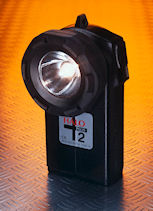 Halo HP-11 Signalling Lamps by White Knight provide guaranteed performance in non-hazardous situations, the HP-11 provides a reliable way forward for the security services and transport industries.
Halo HP-11 Signalling Lamps by White Knight provide guaranteed performance in non-hazardous situations, the HP-11 provides a reliable way forward for the security services and transport industries.
Delivers a constant 10,000 candlepower
Features a high/low beam option for use in low light applications
Interchangeable battery cassette provides 3 hours continuous light on one set of rechargeable 2.2 Ah batteries or 5 hours using standard alkaline batteries
Halo Plus 2 Personal Signalling Lamps
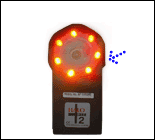 The Halo Plus HP-2 Range of Personal Signalling Lamps features the latest advances in LED Technology. Each lamp features a high performance super bright LED Array in up to three colour combinations – red, green, blue, yellow and white. All colours conform to BS 1376 signal colours. Specialist colour requirements can be met.
The Halo Plus HP-2 Range of Personal Signalling Lamps features the latest advances in LED Technology. Each lamp features a high performance super bright LED Array in up to three colour combinations – red, green, blue, yellow and white. All colours conform to BS 1376 signal colours. Specialist colour requirements can be met.
Network Rail Approved Cert. No. PA/05/965
±7.5° viewing angleCan be viewed in sunlight
Long operational life – typically 60,000 hours
Each colour has 7 LED x 360° array
Coloured changeover switches
Long life fully protected Halogen Bulb
Robust weatherproof mouldings giving high mechanical strength
High resistance to shock and vibration
White Knight professional halogen rechargeable handlamps are powerful, rugged and versatile, giving years of reliable and trouble free service, making them more than capable of withstanding the demands of the real world.
 EXPERT TRIO
EXPERT TRIO
Available in 6, 10, 20, 30 and 50 watt halogen outputs providing between 55 minutes and 14 hours of continuous illumination.
Standard features on all models include:
- High/Low and Flashing Beam Setting
- Low Battery Indicator
- Charge State Indicator
- Vehicle Battery Monitor
- Usage Monitor
- Auto Maintenance Charging
- Electronic Bulb Protection
Mains Failure and Restore Monitor allows Expert WK-5 Trio to be used as an Emergency Portable Light Source.
Special versions using High Output LED Arrays are available for signalling purposes.
A full range of plug-in accessories is available including floodlighting, fingerprint, ultra-violet and other lamps for forensic and close inspection use.
All Expert Trio lamps have environmentally friendly, fully protected Ni-MH Battery Pack, and are supplied complete with Mains Charger, Vehicle Charging Cord and Shoulder Strap.
Expert Trio is approved for use by the MOD and NATO forces.
Rival provides a reliable, lightweight, highly competitive handlamp, ideally suited to the security and ambulance services and for use in other situations such as railways, boats and caravans.
Powered by a halogen bulb it offers a choice of batteries providing 3 or 7.5 hours constant illumination.
The 7.5 hour models come with a 12-24V DC charging lead, 230V mains 3 hour model is mains charging only and excludes shoulder strap
LA Range
The LA combines the 10W halogen power with the economy of a sealed gel lead acid battery giving 2½ hours continuous illumination (or giving 4 hours with 6W bulb).
The model WK-4DC includes an inbuilt 12/24V vehicle charger while the AC/DC version adds a mains 230V charger to provide full charging flexibility.
The WK-4 S comes with a mains charger and storage tray providing 4 hours standby lighting on mains failure.
ULTIMO
The brilliant Ultimo is the ultimate in long range illumination, supplying a blinding white light that could be an effective tool for use during civil disturbances and for ambush lighting.
This 100 watt handlamp provides 35 minutes of continuous light, which can be extended with the use of external battery packs SL-501 (12V 7.2Ah); in addition it can be powered from any 12 volt supply.
EXPERT WK ‘SCENES OF CRIME LAMP’ ATTACHMENTS FINGERPRINT ILLUMINATION LAMP WKA-13
The WKA-13 fingerprint illumination lamp emits a very bright even light designed specifically for Scenes of Crime Officers and Fire Investigators.
Using the Expert WK-5 as a power source, this lamp can be held freely or used attached directly to the handlamp via a mounting adapter, giving hands free operation with the ability to rotate and adjust the angle of illumination.
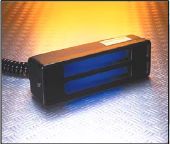 ULTRA-VIOLET LAMP WKA-16
ULTRA-VIOLET LAMP WKA-16
The WKA-16 can be supplied with either long wave or short wave ultra-violet fluorescent tubes, used to read security marking, forgery detection, forensic work, to identify ‘Smart Water’ Indsol tracer and Index Solutions.
SPECIALIST LAMPS EXPLORER SL-41
Popular with surveyors and engineers this lightweight compact lamp with its battery pack gives 7½ hours continuous light. The lamp is stored in a pouch attached to a black canvas battery case, which is worn around the waist with a canvas belt.
100W FLOOD SL-50
The SL-50 contains a powerful 12 volt 100 watt halogen bulb, which is lightweight and capable of floodlighting a large room for investigation, photography, and emergency rescue situations in tunnels or any difficult access sites. Illustrated with a SL-501 (12V 7.2Ah) battery pack, which gives 25 minutes continuous light. Also powered from any 12 volt supply.
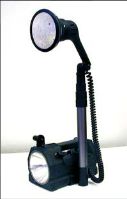 30W FLOOD WKA-24 WITH MONOPOD
30W FLOOD WKA-24 WITH MONOPOD
The WKA-25 bracket & monopod kit is clipped simply and easily to an Expert handlamp and the WKA-24 30-Watt Flood/Work Lamp Flood/Work lamp plugged into the accessory socket. The fully adjustable
monopod may be extended to a working height of up to 1.5 metres.
White Knight Lamps and Torches are manufactured in the UK
For further information or to discuss the design of bespoke hand held lighting products, please call us on +44 (0) 23 9266 8624 or email info@furneauxriddall.com
The Thameslink Programme is transforming rail travel in London. By the time the project is completed in 2018 there will be spacious new trains, every two to three minutes through central London at peak times.
The £6.5bn government-sponsored Thameslink Programme also includes rebuilding London Bridge station.
Almost 54 million passengers pass through London Bridge station every year, and the improved facilities will provide two-thirds more space for passengers.
The new concourse at London Bridge station will be bigger than the pitch at Wembley Stadium, and will include with new retail and station facilities.
The new concourse will allow passengers to access all platforms from one place.
Entrances on Tooley Street and St Thomas Street will connect the surrounding areas.
Tube and bus links will be improved and lifts and escalators will provide step free access to every platform.
The station work will help regenerate the wider area, building on the redevelopment which has taken place in recent years including the Shard, which funded a new bus station.
Thameslink video showing the work taking place at London Bridge station in April 2014
Don’t forget that White Knight are suppliers of:
- Rechargeable Flashlights
- Torches, Handlamps and Lanterns
- Worklamps and Signalling Lamps.
Call us on +44 (0) 23 9266 8624
